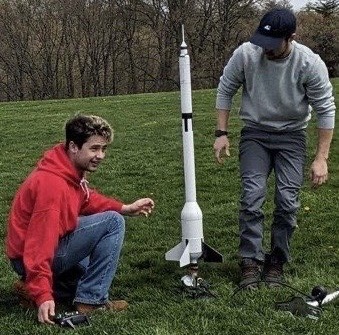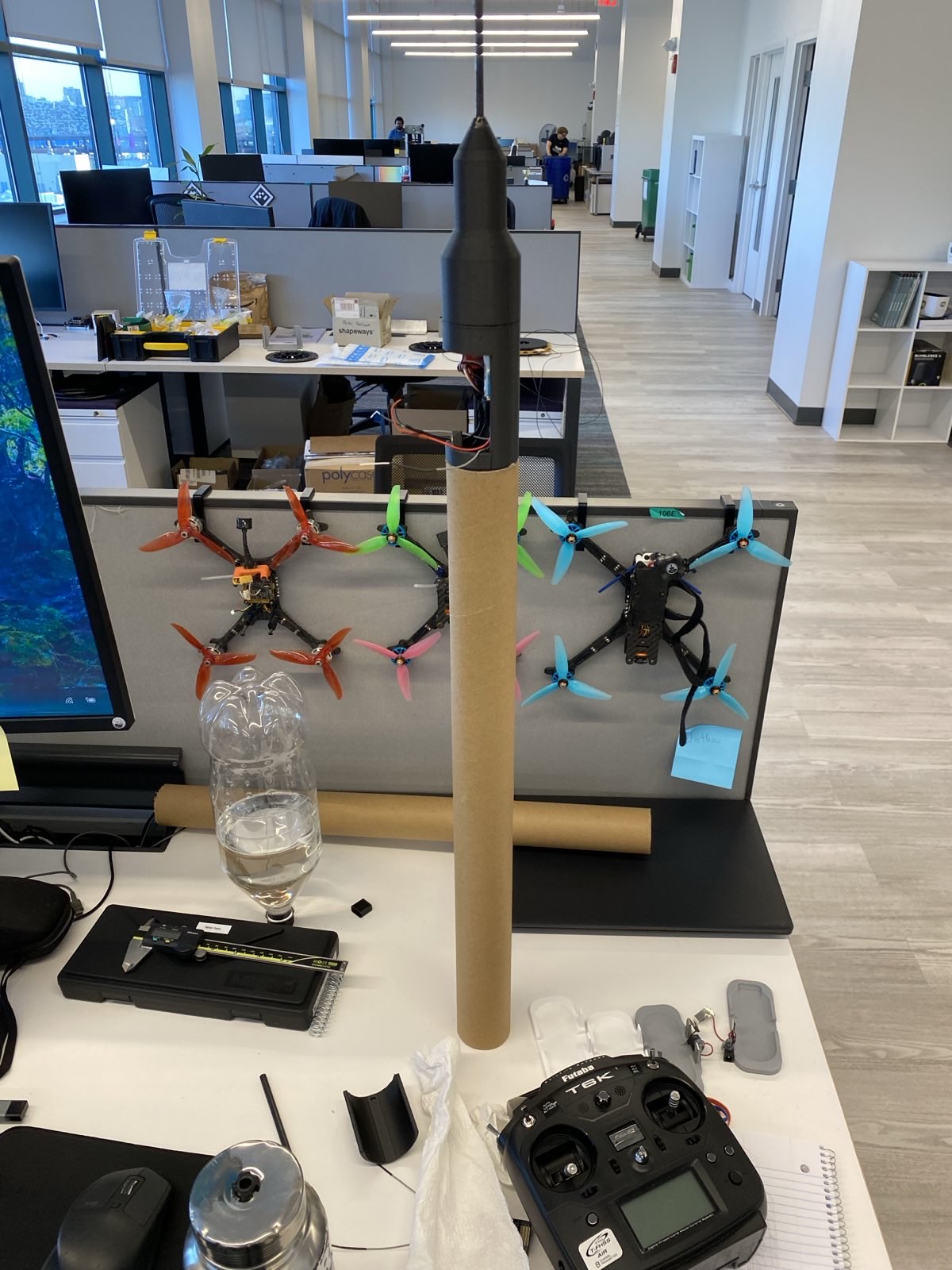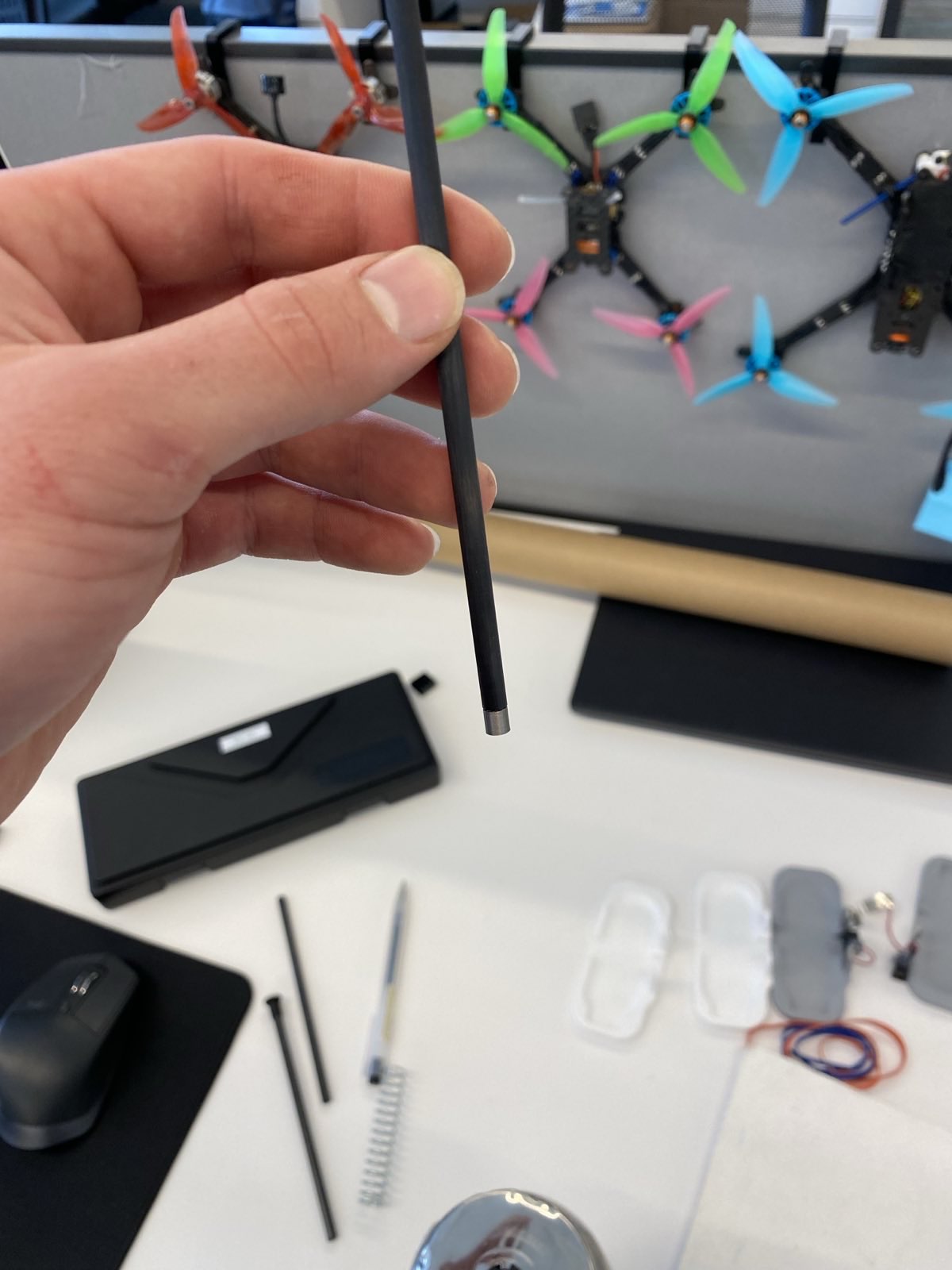Saturn V-2L
During my time at Greensight, we had a friendly water rocket competition. The rules were pretty much just use one standard non-modified 2L bottle with a supplied nozzle as the only source of propulsion, make sure it’s safe, and the rocket that has the longest flight time wins. I decided to go all-out and made a loose replica of a Saturn-V, one of my favorite rockets.
My Saturn V-2L (get it?) had an ‘avionics bay’ that housed two micro LiPos, an RC receiver, and a small servo to trigger the parachute release mechanism. The parachute was wrapped above the avionics bay, and the release mechanism consisted of a small carbon fiber rod that was epoxied into the nose cone, and reached down into the avionics bay to be held by the servo until release. Once the rod was released, a spring shot the nose cone off, releasing the parachute.
The avionics bay and nose cone were mounted far from the bottom of the rocket with a cardboard tube in order to place the CG ahead of the CP. I milled the fins out of thin carbon fiber plate, and mounted them with epoxy to a printed carbon fiber-reinforced PETG piece that wrapped around the bottle. I designed everything in CAD and was able to model the rocket in OpenRocket, which gave me some peace of mind in its stability so that it wouldn’t turn 90deg and become a surface to surface missile as soon as it left the launch pad. Finally, the rocket got a paint job that matched the Saturn V, and the little bottle rocket was ready for launch.
As beautiful, complex, and stable as my Saturn V-2L was, it didn’t quite reach the moon. We got 2nd place, behind my boss who taped a rock to the top of a bottle and fashioned some fins out of cardboard… Sometimes simple is better. We did win a couple of awards for design and effort, and I had a lot of fun.





